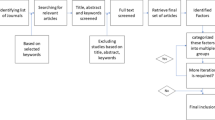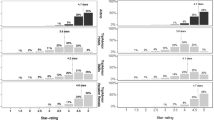Abstract
Implementing a reputation system is an effective strategy to facilitate trust and security in an online environment. In addition to that, reputation systems can help online customers through decision-making process. However, in real-world situations, these systems have to deal with plenty of problems and challenges. This paper aims to solve four problems that are common to reputation systems in e-marketplaces, namely the subjectivity of ratings, inequality of transactions, multi-context reputation and dynamic behavior of users. The proposed model starts with the pairwise comparison, which is a powerful tool for removing bias from ratings. Then, we extend the concept of pairwise comparison to contests between users. A pairwise comparison has only a winner and a loser, but we can associate a score differential with a pairwise comparison when we consider it as a match. This score differential is adjusted in a way that three other problems can be solved. We implemented our model in a multi-agent simulation in which real-world data were also incorporated. We compared our model with some of previous reputation systems. Experiments show that our model outperforms previous ones when faced with real-world challenges.












Similar content being viewed by others
References
Abdul-Rahman A, Hailes S (2000) Supporting trust in virtual communities. In: Proceedings of the Hawai’i international conference on system sciences
Acampora G, Alghazzawi D, Hagras H, Vitiello A (2016) An interval type-2 fuzzy logic based framework for reputation management in Peer-to-Peer e-commerce. Inf Sci 333:88–107
Aggarwal CC, Zhai CX (2013) A survey of text clustering algorithms. In: Aggarwal CC, Zhai CX (eds) Mining text data. Springer, Berlin, pp 77–128
Amolochitis E, Christou IT, Tan ZH, Prasad R (2013) A heuristic hierarchical scheme for academic search and retrieval. Inf Process Manag 49(6):1326–1343
Bharadwaj KK, Al-Shamri MYH (2009) Fuzzy computational models for trust and reputation systems. Electron Commer Res Appl 8(1):37–47
Chang E, Hussain FK, Dillon T (2006) Reputation ontology for reputation systems. In: Meersman R, Tari Z, Herrero P (eds) On the move to meaningful internet systems 2006: OTM 2006 Workshops, OTM 2006. Lecture notes in computer science, vol 4278. Springer, Berlin, Heidelberg
Chehab A, Artail H (2007) PATROL: a comprehensive reputation-based trust model. Int J Internet Technol Secur Trans 1(1–2):108–131
Chen K, Shen H, Sapra K, Liu G (2015) A social network based reputation system for cooperative P2P file sharing. IEEE Trans Parallel Distrib Syst 26:2140–2153
Gleich DF, Lim LH (2011) Rank aggregation via nuclear norm minimization. In: Proceedings of the 17th ACM SIGKDD international conference on knowledge discovery and data mining. ACM, pp 60–68
Hermoso R, Centeno R, Fasli M (2014) From blurry numbers to clear preferences: a mechanism to extract reputation in social networks. Expert Syst Appl 41(5):2269–2285
Hoffman K, Zage D, Nita-Rotaru C (2009) A survey of attack and defense techniques for reputation systems. ACM Comput Surv 42(1):1–31
Huynh TD, Jennings NR, Shadbolt NR (2006) An integrated trust and reputation model for open multi-agent systems. Auton Agents Multi-Agent Syst 13(2):119–154
Josang A, Ismail R (2002) The beta reputation system. In: Proceedings of the 15th bled electronic commerce conference, vol 5, pp 324–337
Josang A, Ismail R, Boyd C (2007) A survey of trust and reputation systems for online service provision. Decis Support Syst 43(2):618–644
Kamvar SD, Schlosser MT, Garcia-Molina H (2003) The Eigentrust algorithm for reputation management in P2P networks. In: Proceedings of the twelfth international conference on world wide web. ACM Press, New York, pp 640–651
Karame G, Christou IT, Dimitriou T (2008) A secure hybrid reputation management system for super-peer networks. In: 5th IEEE consumer communications and networking conference IEEE, pp 495–499
Koutrouli E, Tsalgatidou A (2012) Taxonomy of attacks and defense mechanisms in P2P reputation systems: lessons for reputation system designers. Comput Sci Rev 6(2–3):47–70
Lajoie-Mazenc P, Anceaume E, Guette G, Sirvent T, Viet Triem Tong V (2015) Efficient distributed privacy-preserving reputation mechanism handling non-monotonic ratings. Technical report, IRISA, [online]. Available at https://hal.archives-ouvertes.fr/hal-01104837
Langville AN, Meyer CD (2012) Who’s #1? the science of rating and ranking. Princeton University Press, Princeton
Li M, Wang J, Lu K, Guo C, Tan X (2016) A novel reputation management mechanism with forgiveness in P2P file sharing networks. Procedia Comput Sci 94(2016):360–365
Liu L, Munro M (2012) Systematic analysis of centralized online reputation systems. Decis Support Syst 52(2):438–449
Liu S, Zhang J, Miao C, Theng YL, Kot AC (2014) An integrated clustering-based approach to filtering unfair multi-nominal testimonies. Comput Intell 30(2):316–341
Lott B (2012) Survey of keyword extraction techniques. UNM Education 50
Malik Z, Bouguettaya A (2009) RATEWeb: reputation assessment for trust establishment among web services. VLDB J 18(4):885–911
Nguyen MH, Tran DQ (2015) A trust-based mechanism for avoiding liars in referring of reputation in multiagent system. Int J Adv Res Artif Intell 4(2):28–36
Niu J, Wang L, Chen Y, He W (2014) Detecting collusive cheating in online shopping systems through characteristics of social networks. In: Computer communications workshops (INFOCOM WKSHPS). IEEE, pp 311–316
Resnick P, Zeckhauser R (2002) Trust among strangers in Internet transactions: empirical analysis of eBay’s reputation system. Econ Internet E-Commer 11(2):23–25
Sabater J, Sierra C (2001) REGRET: reputation in gregarious societies. In: Proceedings of the fifth international conference on autonomous agents. ACM Press, pp 194–195
Selvaraj C, Anand S (2012) A survey on security issues of reputation management systems for peer-to-peer networks. Comput Sci Rev 6(4):145–160
Silva JA, Faria ER, Barros RC, Hruschka ER, de Carvalho AC, Gama J (2013) Data stream clustering: a survey. ACM Comput Surv (CSUR) 46(1):13
Song S, Hwang K, Zhou R (2005) Trusted P2P transactions with fuzzy reputation aggregation. IEEE Internet Comput 9(6):18–28
Sun Y, Liu Y (2012) security of online reputation systems: the evolution of attacks and defenses. IEEE Signal Process Mag 29(2):87–97
Tajeddine A, Kayssi A, Chehab A, Artail H (2011) Fuzzy reputation-based trust model. Appl Soft Comput 11(1):345–355
Tavakolifard M, Knapskog SJ (2011) Trust evaluation initialization using contextual information. In: Proceedings of the international conference on management of emergent digital ecosystems. ACM, pp 1–8
Teacy WTL, Luck M, Rogers A, Jennings NR (2012) An efficient and versatile approach to trust and reputation using hierarchical bayesian modelling. Artif Intell 193:149–185
Teacy WTL, Patel J, Jennings NR, Luck M (2006) TRAVOS: trust and reputation in the context of inaccurate information sources. Auton Agents Multi-Agent Syst 12(2):183–198
Wang Y, Zhang J, Vassileva J (2014) A super-agent-based framework for reputation management and community formation in decentralized systems. Comput Intell 30(4):722–751
Wooldridge M (2009) An introduction to multi-agent systems. Wiley, London
Wu Q, Zhu Q, Jian X (2014) A robust decentralized reputation management system for service selection. Opt Int J Light Electron Opt 125(11):2692–2701
Yan Z, Chen Y, Shen Y (2013) A practical reputation system for pervasive social chatting. J Comput Syst Sci 79(5):556–572
Yang B, Garcia-molina H (2003) Designing a super-peer network. In: 19th International conference on data engineering. IEEE, pp 1–12
Zacharia G (1999) Collaborative reputation mechanisms for online communities. Master’s thesis, Massachusetts Institute of Technology
Zhou R, Hwang K (2007) PowerTrust: a robust and scalable reputation system for trusted peer-to-peer computing. IEEE Trans Parallel Distrib Syst 18(4):460–473
Author information
Authors and Affiliations
Corresponding author
Rights and permissions
About this article
Cite this article
Ghiasi, H., Fathian Brojeny, M. & Gholamian, M.R. A reputation system for e-marketplaces based on pairwise comparison. Knowl Inf Syst 56, 613–636 (2018). https://doi.org/10.1007/s10115-017-1141-2
Received:
Revised:
Accepted:
Published:
Issue Date:
DOI: https://doi.org/10.1007/s10115-017-1141-2




